The AMS announced this week that William B. Gail is the new AMS president-elect and will take over as the Society’s president in January of 2014.

Gail is cofounder and chief technology officer of Global Weather Corporation (GWC), a Boulder, Colorado, company that provides precision forecasts to businesses serving weather-sensitive sectors, such as wind energy, transportation, and media. He founded GWC to broaden the public benefit from next-generation forecast technologies being created in universities and national labs. Prior to founding GWC, he was a director at Microsoft, where he was responsible for software innovation such as consumer mobile and 3D weather visualization.
Recently, Gail has been a leader in the call for a U.S. Weather Commission, which would utilize the weather expertise of the meteorological community to advise federal policymakers on forecasting and making the country more weather-ready. He contributed to the NAS/NRC report “Weather Services for the Nation: Becoming Second to None,” and he was a member of a panel that recently spoke to Congress about this topic; he can be seen in this video of the panel, beginning at the 13:15 mark. (The U.S. Weather Commission will be the focus of a Town Hall Meeting at the upcoming AMS Annual Meeting in Austin.)
Newly elected AMS Councilors for 2012 were also announced: Stephen F. Corfidi of the Storm Prediction Center, Sonia Kreidenweis of Colorado State University, Frank D. Marks of the Atlantic Oceanographic and Meteorology Laboratories, Yvette P. Richardson of The Pennsylvania State University, and Elizabeth A. Ritchie of the University of Arizona.
Barack, Mitt . . . and Sandy
In the modern era of presidential campaigns, even with candidates’ every last word and action carefully scripted, there can still be surprises. This year, that surprise came in the form of an interloper named Sandy, a blustery blowhard whose campaign stormed up the East Coast and made bombastic statements all along the way, treating red and blue states with equal disrespect. In the process, Sandy emphatically impacted the race for the presidency. First, she forced both President Obama and Mitt Romney to alter their campaigns while she commanded the attention of most of the Atlantic seaboard. They both had to step away from key battleground states, as the president canceled campaign stops in Florida and Wisconsin and Romney called off events in New Hampshire, Iowa, Ohio, and Wisconsin. The negative rhetoric between the two candidates was toned down while both focused their attention on the storm and its victims.
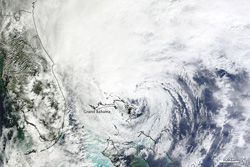
Sandy also caused the cancellation (and subsequent extension) of early-voting days and interrupted training of polling officials in some states, and her impact on voting day may be considerable even though her whirlwind tour is over. One potential effect could be that fewer voters will be able to get to the polls in hard-hit portions of the Northeast and mid-Atlantic, either due to transportation issues, damage to polling venues, power outages, or other hardships. This probably won’t change the election’s outcome, as Obama has a safe lead in most of the affected states. However, his popular vote might be adversely impacted, and thus accentuating the significance of the electoral college. Additionally, polling and media coverage of the campaign has been cut back. Some organizations have temporarily suspended their polling, and with the news media tabbing Sandy as the new “it girl,” the presidential candidates were sent to the fourth estate’s back burner, at least for a few days, as notedby media reporter Howard Kurtz:
Still, the greatest impact may be on public attention. Go to any news website or flip on any cable news channel, and Sandy is the dominant story by far. No one is talking about tax cuts or unemployment or immigration. Television has a tendency to overhype major storms, but given the breadth and destructive power of Sandy, the saturation coverage seems to match its magnitude.
It’s also worth considering what effect Sandy will have on voters’ thoughts about climate and where the two candidates stand on climate change. New York City Mayor Michael Bloomberg cited Sandy in particular and climate change in general in his endorsement of Obama:
The devastation that Hurricane Sandy brought to New York City and much of the Northeast—in lost lives, lost homes and lost business—brought the stakes of Tuesday’s presidential election into sharp relief. . . .
Our climate is changing. And while the increase in extreme weather we have experienced in New York City and around the world may or may not be the result of it, the risk that it might be—given this week’s devastation—should compel all elected leaders to take immediate action. . . .
When I step into the voting booth, I think about the world I want to leave my two daughters, and the values that are required to guide us there. The two parties’ nominees for president offer different visions of where they want to lead America. . . .
One sees climate change as an urgent problem that threatens our planet; one does not. I want our president to place scientific evidence and risk management above electoral politics.
If many other voters share Bloomberg’s perspective that immediate action on climate change is necessary and the President is more likely to take that action, then Barack and Mitt may come to see Sandy as the October surprise that decided the election.
Planning for the Next Superstorm: Kids Will Lead the Way
by Ellen Klicka, AMS Policy Program
Superstorm Sandy was a reminder that the best time for severe weather preparedness is before hazards strike. Unfortunately, it also made clear that many people still lack sufficient know-how to take measures against potential loss of life and property from natural hazards.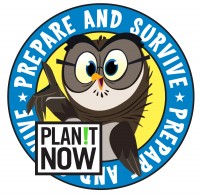
Where to get that know-how? From their kids!
At least, that’s the solution developed in a new online gaming initiative—the Young Meteorologist Program (YMP)—launched during the height of this week’s storm. Children can be passionate about issues that concern them and can be effective at mobilizing the whole family and ultimately the community. Thus YMP stands out from other preparedness initiatives by recognizing children as the gateway to educating families, neighbors, and friends.
YMP is an educational collaboration between the AMS Policy Program, PLAN!T NOW (a non-profit organization that assists communities at risk of disasters), the National Weather Service, and, eventually, children across the nation. PLAN!T NOW asked AMS to help create this free online resource and computer game about severe-weather science and safety. In 2010, AMS Policy Program staff connected PLAN!T NOW to disaster preparedness and response leaders.
NOAA contributed considerable knowledge and support for the Young Meteorologist Program and other PLAN!T NOW initiatives. The AMS Policy Program and NOAA advised PLAN!T NOW on such topics as storm classification, tornado development, flooding and storm surges. The National Education Association also assisted to ensure the educational quality of the program. The diverse team of experts involved in YMP includes educators, scientists, entertainers and software developers, all working towards the common goal of creating disaster resilient communities across America.
The joint effort culminated in YMP’s public launch on October 29, as the Eastern seaboard began to feel Sandy’s impact. The AMS Education Program has assisted in promoting the program’s availability by reaching out to its network of K-12 science teachers. YMP will be a part of classrooms, museums, libraries, major city expos and events all over the country, reaching tens of thousands of children and adults.
YMP also brings Owlie Skywarn – a trademarked character of NOAA, revised and updated by PLAN!T NOW – into the 21st century by making him a central character in an interactive environment online—no longer limited to printed brochures. YMP game designers began with educational material from a NOAA booklet featuring Owlie; he and a host of other animated characters help each child become a junior data collector for the game’s “Weather Center.” Game modules cover hurricanes, lightning, floods, tornadoes, and winter storms. Each game is created in full, interactive animation.
Students who complete the online program earn a Young Meteorologist Certificate. Empowered by this recognition of their knowledge and effort, they are more likely to encourage parents and others to make assemble disaster kits, write emergency plans, and overall make preparedness a priority. The kids are invited to put their new knowledge to work through hands-on activities and community service projects highlighted on the program’s website. Resources for educators, parents and meteorologists to give further guidance to the Young Meteorologists are also available there.
Attendees at the upcoming AMS Annual Meeting in Austin, Texas, can learn more about YMP from the expert’s perspective–NOAA’s Ron Gird and colleagues will present a poster at the Education Symposium (2:30-4 p.m.; 7 January 2013). Dan Pisut of NOAA’s Visualization Lab spoke to the AMS Broadcast Conference about YMP this past August, and that presentation can be heard on our meetings archive.
Future versions of YMP may include new modules on fires and tsunamis, in addition to the five modules in the current game. Other scientific disciplines, such as oceanography and climatology could serve as the basis for programs similar to YMP down the road.
Prepared communities start with prepared households. AMS and its partners are recognizing that those households might become prepared because of knowledgeable children.
Wild Weather Comes to NCAR
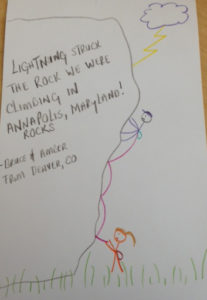
A new exhibit exploring the power of weather and the stories behind it opened earlier this month at NCAR’s Mesa Lab in Boulder, Colorado. Spark, the group that oversees science education at UCAR, created the exhibit with input from scientists, engineers, designers, and writers.
“Weather is a fascinating topic and it affects us all,” comments Rajul Pandya, director of Spark. “In the new Weather Gallery, visitors can touch clouds, make forecasts, and learn how scientists understand weather using special instruments and computer simulations.”
The NCAR Weather Gallery joins existing exhibits like an eight-foot-tall tornado, a microburst generation tank, and a display that shows current wind speeds measured on top of the building. One of the new features is the interactive, “Tell Your Weather Story,” which gives visitors the opportunity to describe and post their own experiences on weather.
It took about 20 months to plan and develop the exhibit from start to finish. To begin the process, an advisory committee met to decide what topics the exhibit should cover and what they wanted visitors to experience. They came up with a plan that included five content sections and several different ways of delivering information, which included hands-on interactives, large mural photos, panels with pictures and text, and touch screens with games and videos.
Since the exhibit opened on 10 October, the Mesa Lab has had approximately 2,000 visitors, with at least half that number spending time in the exhibits. About 15,000 people a year attend scheduled programs at lab, including 10,000 K-12 students and teachers who take classes and go on tours, as well as 5,000 in special groups and public tours.
“People are really excited about the new exhibit. Visitors love all of the opportunities to play with the hands-on stuff, and it’s been fun to see groups of visitors interacting with each other as they explore different parts of the exhibit,” says Becca Hatheway, NCAR exhibit manager. “UCAR and NCAR staff members are also excited to see something new in this space. I’ve seen just as many staff spending time in the exhibits as I have seen visitors. So I guess we’re all excited to learn more about the weather.” The visitor center at the Mesa Lab is open to the public year round and offers free exhibits about weather and climate, a gallery featuring local artists, an outdoor weather trails, and more. For more information visit the Spark web site.
And speaking of Spark, today (Saturday, 27 October) is UCAR’s Super Science Saturday from 10 a.m. to 4 p.m.–a chance for the whole family to visit the labs and combine science with some Halloween fun. There’s a preview video at the Spark home page:
A Chat with the Iceman

By Maureen Moses, AMS Education Program
I hope you all had a good Earth Science Week last week! The theme was “Careers in the Earth Sciences,” and the AMS Education Program participated in a twitter chat with NASA Polar Scientist Thorsten Markus, who admits that as a high schooler in Germany science wasn’t his passion, but becoming a musician was. Now head of NASA Goddard’s Cryospheric Science Lab, Dr. Markus makes measurements of ice thickness in Antarctica.
Chat participants included a whole classroom full of eighth graders. Dr. Markus had plenty of advice on how a future polar scientist with an adventuresome streak can make a splash in a cool field! Here are some of the questions he fielded–edited and excerpted from the full chat archived on Twitter:
I’m here with 25 8th grade Earth Science students and one student would like to know what the day to day duties are as a polar scientist.
It’s extremely playful — playing with lots and lots of satellite data and learning something new every day.
Do you get to travel to cool places or are you processing data in an office?
Oh man, yes. I used to go to the Arctic and Antarctic and also flew over them in helicopters and planes.
What was your favorite experience in the field as a scientist?
Seeing the penguins coming out of the water and then standing right next to us. Fantastic!
When you decided becoming a rock star might not happen, why did you choose physics over math for a major?
Physics is pretty much applied Math — you deal with everyday problems… and actually learn how to solve some.
Which class helped you the most to get where you are today?
Maybe Math, but the arts fostered my creativity, for thinking outside the box
What level math did you have to go to? (for the future polar scientists out there). THX for the response!
I have a Ph.D. in physics, which involves a lot of math — but there’s also chemistry, biology and geography.
What is the difference between glacier ice data and sea ice data… Do they tell different stories?
Very different. Glacier ice is fresh water from mountains or ice sheets whereas sea ice is frozen ocean.
Are they affected differently by climate change?
Glaciers are balanced by snowfall and temperature, while with sea ice, also ocean properties play a big role.
So sea ice is inherently more volatile/variable?
I’d like to say sea ice is more complex, but then the ice sheet people might get angry 😉
What is/will be the impact of disappearing ice sheet on the global climate?
Melting of the ice sheets will increase sea level and affect ocean circulation because of the fresh water influx.
When can we expect to see Antartica’s ice retreating because of climate change. If it keeps stable or increasing, what can be made of that?
The Arctic and Antarctica are two different systems and global warming does not mean it warms uniformly everywhere.
What do you say to people who claim there’s a “debate” about climate change?
I don’t think there’s a “debate” about whether there’s climate change. The debate is by how much we’re responsible for it.
How good are the current models in predicting Arctic and Antarctic ice response to the climate warming?
I think the models are remarkable — certainly not perfect, but what prediction is perfect?
What climate data scares you the most (has the greatest implication for scary future events)?
The global ocean circulation, because it shows that things we do to the Chesapeake Bay may affect far away places.
Does any of the research you do tell us anything about other sheets of ice in cosmos?
As a matter of fact, I was involved in research about the Jupiter icy moons. So yes, there are analogies.
Who do you regard as your inspiration?
It was Keith Richards, now it’s the balance of the earth system… isn’t it remarkable how it all works together?
Help Us Get Dressed for Success in Austin
What comes to mind when you think about the AMS? Can you express it with an interesting and eye-catching graphic?
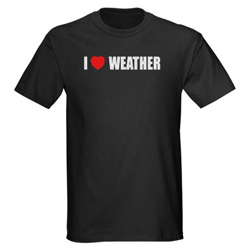
If so, then we have a contest for you: the Society is looking for a member to create an original design for a tee-shirt that represents the mission of the AMS. The winning shirt will be sold at the upcoming Annual Meeting in Austin, and the designer of the chosen shirt will receive free registration to that meeting. And as an added bonus, it’s all for a good cause: proceeds from sales of the shirts will be donated to the AMS Student Travel Grant fund, which helps senior undergraduate and graduate students attend AMS meetings.
The deadline is November 9, so it’s time to start thinking creatively, and then send your idea to [email protected]. The complete rules for the contest can be found here.
These Observations Get Our Stamp of Approval
The scientific benefits of Earth observation are well known in the atmospheric sciences. But there’s an artistic side to such observations, too, which is spectacularly depicted in the U.S. Postal Service’s new Earthscapes stamps, released last week in celebration of National Stamp Collecting Month and featuring images shot aloft from a variety of platforms, from a micro-light kite to satellites in space.
The set of 15 different stamps depicts natural, agricultural, and urban scenes from across the country. The Service’s contracted photo editors and researchers culled hundreds of images, which USPS Art Director Howard Paine narrowed down to the final 15. Some photos were taken by people in private planes and helicopters; others were taken by unmanned instruments, including the one below of the volcanic crater of Mount St. Helens in Washington, which was captured in 1999 by NASA’s Landsat 7. Other images in the set include ice breaking off from Alaska’s Bear Glacier, a cherry orchard in Wisconsin, and a cranberry bog in Massachusetts.
Along with the forever stamps, other Earthscapes collectibles for the philatelist include a first-day cover set, a jigsaw puzzle, and an Earthscapes ceremony program.
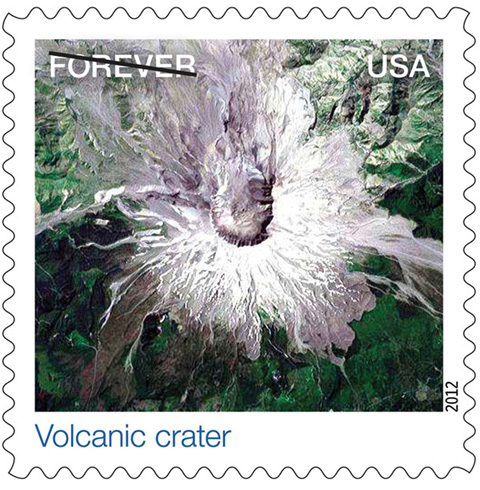
Getting Ready to See You in Austin!
With the 93rd Annual Meeting of the American Meteorological Society in Austin coming up in a short period of time, your local planning committee is meeting and getting the local details all together for a great time for our society members in the “Music Capital of Texas.”
The local planning committee has been working with the national planning committees and with American Meteorological Society headquarters to make the meeting a memorable one.
Among the items that are being planned are environmental cleanup opportunities (through “Keep Austin Beautiful”) along Austin’s Lady Bird Lake, for AMS and local participants that want to volunteer, on the Sunday that the meetings officially open. In addition, the local committee is planning an AMS sponsored “Weather 101″ educational session for area scouts, Campfire USA and Texas 4H members that will satisfy education requirements for learning programs and badges. The session will allow the young people to meet and visit with Austin area broadcast meteorologists.
The local planning committee is working with the national Weatherfest committee to make the Weatherfest on the opening Sunday the best ever! The committees are contacting local, state and national private sector, governmental, academic and professional groups that would like to be part of the effort to bring “hands on” weather and climate experiments, equipment and other opportunities for the general public to experience.
Other local events being planned for our members as well as other in the local community include a two day teacher weather and climate workshop, including an evening “Hot Science – Cool Talks” event sponsored by the University of Texas’ Environmental Science Institute.
To make the meetings uniquely “Texas,” our committee is working closely with members of the South Central Chapter of the American Meteorological Society (Austin-San Antonio) as well as with the student chapters at Texas A & M University (College Station) and at the University of the Incarnate Word (San Antonio). In addition, the AMS Local Chapters Affairs Committee as reached out, through conference calls, to local chapters across the United States to encourage their involvement and participation as well.
To make you aware of the local environment – atmospheric and otherwise – local committee members will prepare short videos that will air in the registration area talking about the basic weather and climate of Austin and south central Texas as well as everything you want to know about the Austin music scene.
We’re looking forward to seeing everyone in Austin in January!!
Congressional Staff Hear Unified Call for a U.S. Weather Commission
by Ellen Klicka, AMS Policy Program
Courage is what it takes to stand up and speak; courage is also what it takes to sit down and listen. – Winston Churchill
The weather enterprise in the U.S. is a diverse community of government agencies, the private sector, academic institutions, and nongovernmental societies with a common interest to foster resilience to weather events from the national level to the smallest village. The effectiveness of the enterprise is affected by its members’ ability to listen to the needs of the users of weather products and services and speak up to ensure those needs are met.
On Thursday, Congressional staff members packed into the House Science Committee Hearing Room with representatives from NOAA, scientific societies, private companies, universities and other interested parties to discuss the state of the weather enterprise. The agenda centered on the proposed creation of the first U.S. Commission on Weather Policy.
The briefing, sponsored by the University Corporation for Atmospheric Research (UCAR) and the Weather Coalition, was prompted by recommendations the National Academy of Science Board on Atmospheric Sciences and Climate (BASC) made in an August report, Weather Services for the Nation: Becoming Second to None. The BASC report drew upon lessons learned from the National Weather Service (NWS) modernization project completed in 2000 and provided guidance on future improvements to the NWS.
One recommendation focused on engaging the entire weather enterprise to develop and implement a national strategy to strengthen products and services the public depends upon. “The greatest national good is achieved when all parts of the enterprise function optimally to serve the public and businesses,” the report stated. The Weather Coalition, in turn, recommended the establishment of a commission.
The briefing also followed a Town Hall meeting at the 2012 AMS Annual Meeting in New Orleans that solicited input from AMS members regarding what messages the weather enterprise needs to send to Washington.
Panel speakers included John Armstrong, chairman of the BASC report committee; Bill Gail, co-founder and Chief Technology Officer of Global Weather Corporation; Pam Emch, Senior Staff Engineer/Scientist, Northrop Grumman; and Tom Bogdan, president of UCAR. Moderator Scott Rayder, Senior Advisor to the President, UCAR, asked the panelists to lay out the case for chartering such a commission, which would likely be composed of top officials from the Legislative and Executive branches.
The commission would provide “strong and consistent advocacy” for the weather enterprise’s priorities in an organized manner, Dr. Emch said. Dr. Gail emphasized the opportunity afforded by a thriving private sector within the weather enterprise even during a strained period in the national economy. Dr. Armstrong provided a reminder that today’s information-centric society continually raises the public’s expectations of the accuracy and convenient delivery of the enterprise’s products and services.
An e-mail invitation described the purpose of the proposed commission. “At a time of fast-changing technological innovations, the commission would advise federal policy makers on setting priorities for improving research and forecasts thereby creating a more weather-proof nation. Its goal is to ensure effective spending on the nation’s weather research and related systems, while minimizing the impacts of major storms.”
The proposed commission would follow the structure of the U.S. Commission on Ocean Policy, chartered by the Oceans Act of 2000.
Before a weather commission launches, specific measurable criteria need to be developed to gauge its effectiveness. Will objectives encompass securing steady or increased federal funding? Are any new programs or councils called for? Will expectations or guidelines be set as to what the private and academic sectors would contribute and receive in return?
According to Dr. Bogdan, a near-term next step might take the form of a second briefing on Capitol Hill, during which end users of weather forecasts and warning information could convey their needs and how they would benefit from a U.S. Commission on Weather Policy. Supporters of the proposed commission also will need to identify members of Congress willing to sponsor a bill that would charter the commission. If legislation is introduced, the sponsors would have their turns to courageously speak up for the weather enterprise and ask their colleagues on the Hill to have the courage to listen.
AMS Dedicates 45 Beacon Room to Joanne Simpson
Last week, AMS held a ceremony at our 45 Beacon Street headquarters in Boston to celebrate the life and accomplishments of pioneer scientist Joanne Simpson. The AMS Council, AMS staff, and members of Joanne’s family gathered to watch the unveiling of her portrait that hangs in what is now “The Simpson Room.” The first woman to ever receive a Ph.D. in meteorology and first female AMS president, Joanne’s numerous contributions to science and the Society were lauded by current AMS President Louis Uccellini and Past President Peggy Lemone:
One of Joanne’s daughters was in attendance and Joanne’s husband, Robert Simpson, and three other children were able to view the ceremony through video conference. Robert had this to say:
On behalf of the Simpson family at large, I want to express our deep appreciation to the Society for its special recognition of Joanne Simpson with this unique posthumous award. All of us appreciate that you chose this unique way of further honoring Joanne. She served AMS nobly and effectively throughout her career—a career distinguished not only by her seminal contributions to tropical meteorology and the general circulation of the globe, but also her dedication to the role of women in science, showering them with encouragement, assistance in their efforts, and championing their struggle for recognition.
Simpson concluded by noting if Joanne had been given a choice she probably would have treasured this recognition by AMS even more than she did her Carl Gustaf Rossby gold medal award.